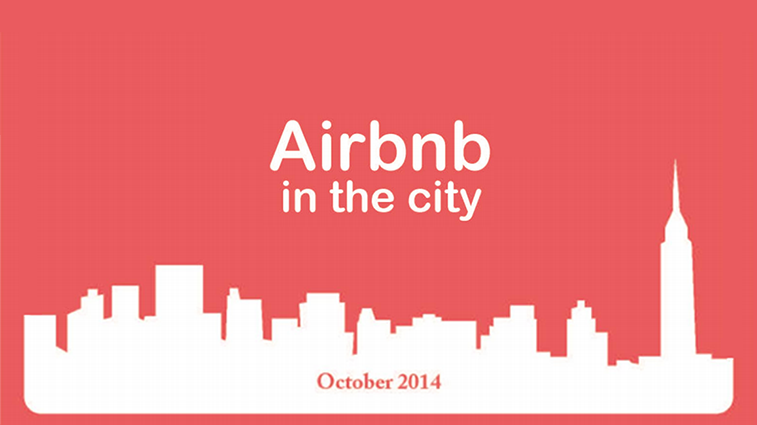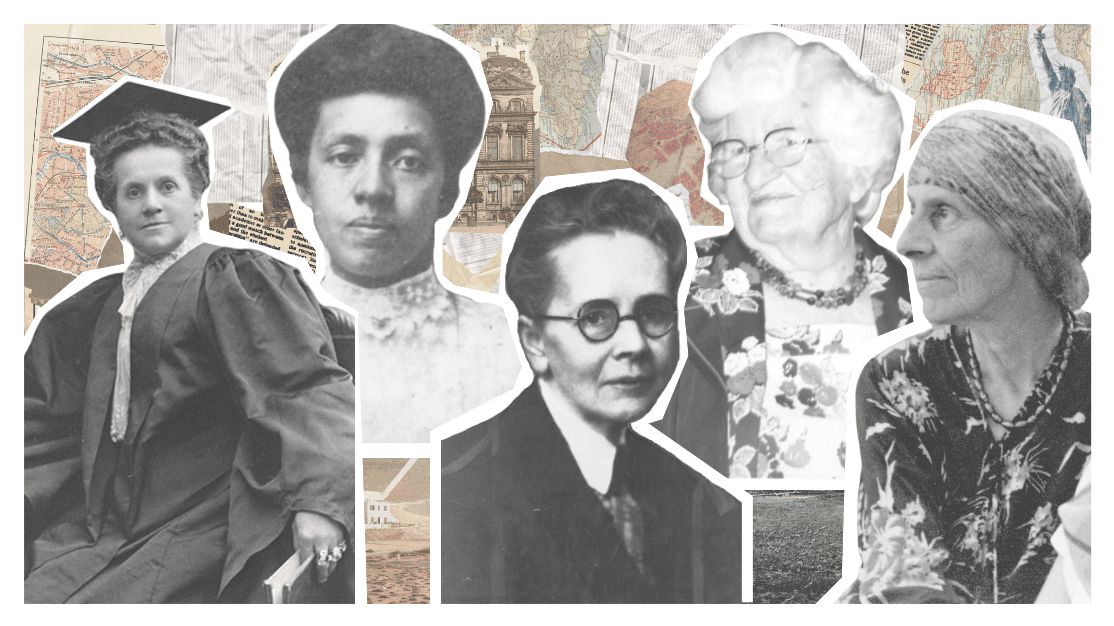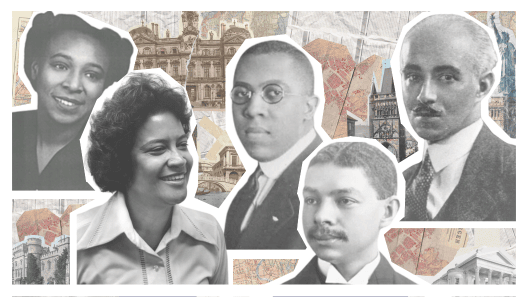
Short-Term Rentals Get the 3rd Degree in NYC
Short-term apartment rentals are on the rise in New York City. According to a recent report by the Attorney General of New York Eric Schneiderman Airbnb in the City, rentals through the popular apartment rental website Airbnb increased 600% over the last four years. The report concludes that many short-term rentals are residential dwellings operating illegally as transient dwellings. This article will outline the building code and zoning standards required of transient dwellings and how they are different than standards required of residential dwellings.
First, let’s look at the essential laws that define an occupancy’s classification.
New York State – The Multiple Dwelling Law
The Multiple Dwelling Law is a 1929 New York State Law that provides standards for life-safety, health, and welfare in all buildings containing three or more dwelling units. The Multiple Dwelling Law defines whether a building is a permanent or transient residence.
A class A multiple dwelling unit is one that is occupied by the resident in a permanent nature for 30 or more consecutive days. Class A multiple dwellings are units in a residential apartment building that contains three or more apartments. It is stipulated that a class A multiple dwelling unit is occupied by the natural resident or family as defined by the law.
A building that is occupied less than 30 days, or transiently, is classified as a class B multiple dwelling. Hotels, rooming houses, club houses, college and school dormitories are considered class B multiple dwellings.
New York City – J and R
The New York City Building Code has its own classification for transient and residential dwellings. The 1968 Building Code classifies a dwelling occupied for less than one month as a J-1 and a dwelling used on a permanent basis as a J-2.
The 2008 Building Code classifies a dwelling used transiently (for less than one month) as a R-1 and a building used on a permanent basis as a R-2. For the purposes of article readability, all J-1, R-1, and class B buildings will be referred to as transient occupancies. Conversely, all J-2, R-2, and class A buildings will be referred to residential occupancies.
Transient dwellings do not include room rentals where the permanent residents or family is present. Units occupied by other persons for less than 30 days when the permanent resident is absent, so long as there is no monetary compensation, are not considered transient.
Certificate of Occupancy
Every building in New York City has a certificate of occupancy that declares the approved building occupancy group and zoning use group. For instance, a residential building built today would be classified as a R-2. Any change in occupancy would require an amendment to the certificate of occupancy reflecting the use change. For example, if a permanent residence changes to an office, it’s considered an illegal office by the city. To make it a legal office, the unit would need to undergo an inspection to make sure it meets the occupancy standards before a new certificate of occupancy is issued.
Zoning
The city is subdivided into three main zoning classifications: Residential (R), Commercial (C), and Manufacturing (M). Each of these classifications breaks down into several sub-districts, each with their own standards and restrictions. According to the New York City Zoning Amendment, a building can only be occupied transiently in C1, C2, C4, C5, and C8 districts. This is why you find hotels clustered in designated areas of the city. New York City’s zoning maps can be viewed here.
In boroughs outside of Manhattan, residential and manufacturing occupy large portions of the city. A neighborhood like Fort Greene in Brooklyn is almost entirely residential. Without a change in zoning, or special variance issued by The City Planning Commission, a hotel would never get a certificate of occupancy in Ft. Greene. Therefore, any dwelling operating transiently in residentially zoned Ft. Greene is illegal.
Let’s assume a residential unit is in a C1, C2, C4, C5, or C8 commercial zoning district (where transient dwellings are permitted) and the owner wants to legally occupy the unit as a short-term rental. They will need to file an alteration 1 application to change the existing use and amend the certificate of occupancy. Once the application has been approved and permitted, the building will have to pass inspections to secure a certificate of occupancy. Only then can the building be legally occupied transiently.
Transient vs. Residential
Transient dwellings like hotels are required to be safer for good reason. Transient occupants are less familiar with building layout and emergency safety measures than permanent residents. Instances where transient occupancies have higher, more stringent building code standards include fire safety, egress, accessibility standards, elevators, and electrical.
Fire Safety
Fire safety standards are higher for transient occupancies. This includes extinguishers, fire rated walls, automatic fire detection, and evacuation.
Extinguishers
Transient occupancies are required to have a fire extinguisher within 75 feet of each dwelling unit. The extinguisher must be visible and easily accessible. Residential occupancies are not required to have fire extinguishers in New York City.
Fire Ratings
A load-bearing member is a structural member of two floors or more. Load bearing members for transient occupancies have higher fire ratings. A higher fire rating on a load-bearing member can curb the spread of a fire and collapsing of a member, allowing occupants more time to evacuate the building. The requirements of the building code for fire resistance assume that occupants in a transient building will require more time to locate an exit and make egress in the event of a fire. Table 3-4 in Title 27 / Subchapter 3 of the 1968 Building Code outlines the fire ratings for load-bearing members.
Fire Detection
There are higher safety standards for fire detection systems in transient buildings. A manual fire alarm system is required in any building over two stories. In addition, transient occupancies with public corridors are required to have automatic fire detection systems.
The 2008 Building Code specifies that transient occupancies need to have smoke detectors in all sleeping areas, in every room leading to egress, and on each story of the unit. Residential buildings are required to have smoke detectors only in units 3 floors or higher than exit, in units located 1 or more story below highest level of exit, or in buildings that are with over 16 units.
Sprinkler Systems
 All newly built residential and transient occupancies are subject to the current Building Code and require sprinkler systems. However, existing residential buildings constructed prior to 1968 do not retroactively require sprinkler systems. Any dwelling that changes use from residential to transient is subject to the sprinkler requirements of latest building code, 28-101.4.3 exception 2. If a residential unit is rented out for a weekend, it is required to install a sprinkler system to be code compliant.
All newly built residential and transient occupancies are subject to the current Building Code and require sprinkler systems. However, existing residential buildings constructed prior to 1968 do not retroactively require sprinkler systems. Any dwelling that changes use from residential to transient is subject to the sprinkler requirements of latest building code, 28-101.4.3 exception 2. If a residential unit is rented out for a weekend, it is required to install a sprinkler system to be code compliant.
Egress
The impetus behind higher standards for transient egress is the same as the fire standards, safety. In the event of a fire, timely evacuation is critical. Most fire related fatalities are due to smoke inhalation.
Dead End Distance
The location of units within a building are subject to what is called dead end distance. A dead end is a portion of a corridor in which the travel to an exit is in one direction only. In other words, it’s an area you don’t want to be caught in if the only thing between you and the exit is a fire.
 In some circumstances, residential buildings are permitted to have a maximum dead end distance of 80 feet. That is a long distance in a typical corridor. Transient buildings are never permitted to have a dead end distance of greater than 40 feet. Depending on the year it was constructed, the distance may be limited to as little as 20 feet. Typically transient occupancies deal with this by designing their stairwells in the center of the building with a vertical circulation hallway allowing the occupants to always have two directions of travel, thus eliminating any dead ends.
In some circumstances, residential buildings are permitted to have a maximum dead end distance of 80 feet. That is a long distance in a typical corridor. Transient buildings are never permitted to have a dead end distance of greater than 40 feet. Depending on the year it was constructed, the distance may be limited to as little as 20 feet. Typically transient occupancies deal with this by designing their stairwells in the center of the building with a vertical circulation hallway allowing the occupants to always have two directions of travel, thus eliminating any dead ends.
Exit and Egress Signs
Exit path markings are photoluminescent markings directing occupants to egress. For residential occupancies, exit path markings are not required. Transient occupancies exceeding 75 feet in height are required to provide photoluminescent markings along the egress path of travel. They require clearly marked exit signs at every exit and every opening from a room and in long corridors directions signs are required in order to guide to egress in all transient occupancy buildings.
Egress diagrams should be familiar to anyone who has stayed in a hotel. Residential buildings in New York are not required to have an egress diagram inside of units. Transient buildings are required to post a diagram showing the egress layout of the floor. This includes location and letter identification of exit stairs and the number of doors opening into the corridor.
Accessibility
Buildings built after the Americans with Disabilities Act of 1991 are required to have building features to accommodate persons having all matters of physical disability. Transient occupancies are required to be accessible, while residential occupancies are only required to be adaptable. Some accessibility requirements include presence of an interior accessible route, accessible entrances, accessible parking, and wheelchair spaces. For a full list of requirements for what is accessible, see chapter 11 of the 2008 Building Code.
Adaptability is roughly the same set of accommodations for the disabled. The critical difference is that the adaptable features permissible in residential occupancies allow future modifications to be made within ten days’ notice, thus providing fully accessible features for the tenant. The features required for people having all matters of physical disability in a transient occupancy must be fully accessible at all times.
Transient buildings are required to have a certain number of units, or percentage of units, that are accessible in perpetuity. The minimum number of units is one, meaning in a three-floor walkup used from transient purposes, one unit must be fully accessible. In addition to the accessibility requirements above, transient accessibility includes two additional requirements. One is the existence of a roll-in shower with a folded shower seat or transfer type tub. The second is a smoke and/or carbon monoxide detectors with audible and visual features.
Elevators
According to the 1968 Building Code Section 27-368 elevators or escalators are required in all residential buildings exceeding four stories in height. Transient buildings are required to have elevators or escalators in all buildings over two stories in height. A three story residential building that changes use to a transient building is required install an elevator or escalator to be code compliant.
Electrical
The 2008 Building Code section 2702.2.20.1 requires transient occupancies to have emergency power systems for exit signs, elevator interior lighting, emergency alarm systems, automatic fire detection systems, fire alarm systems, electrical fire pumps, ventilating systems, stair pressurization, and at least three elevators in a building (if elevators are manual transfer). Residential occupancies do not require emergency power systems in these instances.
The arguments over whether short-term rental websites like Airbnb should operate in New York City generally focus on economics. Public safety for transients is often an afterthought or entirely ignored in the dialogue. The general public may not readily understand the liability that is assumed when allowing illegal transient use in their unit, nor the potential for a devastating outcome in the event of an emergency scenario. The intent of the laws governing transient construction is to provide prescriptive measures based on past experience and prevent future events from becoming fatal catastrophes.
Are you a building owner or developer needing code consultation or expediting? Contact us.









